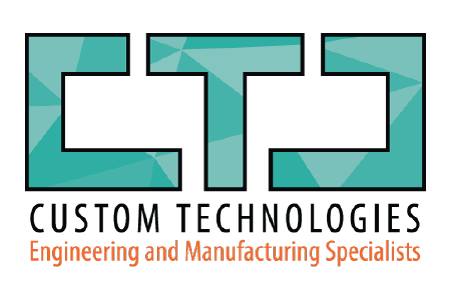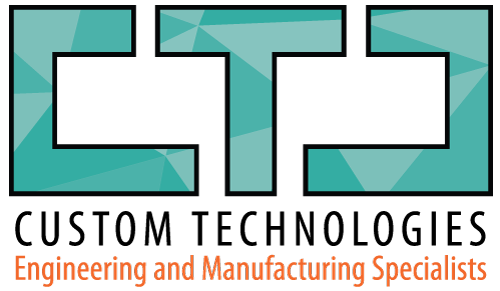Combining Machining and Welding for Innovative Manufacturing Solutions
The manufacturing landscape is continually evolving, driven by the relentless pursuit of efficiency, precision, and innovation. At the heart of this evolution is the integration of two fundamental processes: machining and welding. Traditionally viewed as separate disciplines, the convergence of machining and welding is now paving the way for groundbreaking manufacturing solutions, transforming how industries approach product development and production.
The Synergy of Machining and Welding
Machining and welding serve as the backbone of the manufacturing industry, each playing a pivotal role in the creation of durable, high-quality products. Machining offers the precision and flexibility to shape materials into intricate components, while welding provides the strength and durability to assemble these components into functional products. When these processes are intelligently integrated, they unlock a new realm of manufacturing possibilities, combining the best of both worlds to enhance production outcomes.
The integration of machining and welding in manufacturing not only streamlines production processes but also fosters innovation, allowing for the creation of complex structures that were previously unattainable. This synergy enhances product quality, reduces production times, and opens the door to new design possibilities, making it a key strategy for manufacturers looking to stay ahead in a competitive market.
Innovative Applications of Integrated Machining and Welding
The combination of machining and welding has led to the development of innovative manufacturing solutions across various sectors. For example, in the aerospace industry, this integration has enabled the production of lightweight yet strong components critical for aircraft performance and safety. Similarly, in the automotive sector, combining these techniques has facilitated the manufacture of complex parts that contribute to vehicle efficiency and durability.
One notable application is the creation of custom machinery parts that require the precise removal of material through machining, followed by the addition of structural elements through welding. This approach allows for the production of components with tailored properties, such as enhanced strength at critical points or reduced weight without compromising integrity.
Best Practices for Integrating Machining and Welding
Successfully integrating machining and welding requires careful consideration of several factors to ensure quality and efficiency. Material compatibility is paramount, as the chosen materials must be suitable for both machining and welding processes. Process optimization is also crucial, involving the careful planning of production sequences to minimize material waste and production time.
Quality control is another critical aspect, necessitating rigorous testing and inspection protocols to ensure that the integrated manufacturing process consistently yields high-quality results. Manufacturers must also stay abreast of technological advancements, such as automation and digital fabrication techniques, to fully leverage the potential of integrated machining and welding.
Innovative Applications of Integrated Machining and Welding
The convergence of machining and welding technologies has led to a renaissance in manufacturing, enabling the creation of components and structures that were once deemed too complex or impractical. This section delves into the transformative impact of integrating these processes, showcasing how they bring innovation to various industries.
Aerospace and Automotive Breakthroughs: In the aerospace sector, the precision of machining combined with the strength of welding has facilitated the development of components that meet the rigorous demands for lightweight and high-strength materials. Automotive manufacturers leverage these integrated processes to produce complex parts that contribute to the overall performance and safety of vehicles, such as engine components and chassis structures.
Custom Fabrication: The ability to machine intricate parts and then join them with precision welding has opened up new avenues in custom fabrication. This approach is particularly beneficial in creating bespoke machinery or parts for specialized applications, allowing for a level of customization that was previously difficult to achieve.
Advanced Prototyping: For industries looking to prototype new designs, the integration of machining and welding offers a rapid and cost-effective route from concept to functional prototype. This capability accelerates the innovation cycle, enabling faster testing, iteration, and development of new products.
Energy and Infrastructure: In the energy sector, the durability and precision required for components such as turbines and pipelines are achieved through the combined strengths of machining and welding. Similarly, infrastructure projects benefit from this integration, allowing for the construction of complex structures with enhanced reliability and longevity.
By harnessing the complementary strengths of machining and welding, manufacturers can push the boundaries of what’s possible, creating products and components that offer superior performance, durability, and innovation.
Best Practices for Integrating Machining and Welding
The seamless integration of machining and welding in manufacturing processes requires a strategic approach to ensure quality, efficiency, and innovation. This section outlines best practices for manufacturers looking to harness the full potential of these combined technologies.
Material Compatibility: Selecting the right materials that are amenable to both machining and welding is crucial. Understanding the properties of materials, such as their weldability and machinability, can help in choosing the most suitable options for specific applications.
Process Optimization: Careful planning of the manufacturing sequence is vital to maximize efficiency. Considerations should include the order of operations, minimizing material handling, and reducing setup times. Integrating machining and welding processes often requires a holistic view of production to identify areas where the two can be most effectively combined.
Quality Control: Implementing rigorous testing and inspection protocols is essential to ensure that the integrated processes meet the desired standards. This might include non-destructive testing (NDT) methods for welds and precision measurements for machined components to verify that they adhere to specifications.
Technological Advancements: Staying updated with the latest advancements in both machining and welding technologies can provide significant advantages. Automation, robotics, and digital fabrication techniques can enhance the precision, speed, and repeatability of integrated manufacturing processes.
Training and Skill Development: Given the specialized nature of integrated machining and welding, investing in training and skill development for the workforce is key. A well-trained team can effectively leverage these technologies to produce high-quality results.
Safety Considerations: Ensuring a safe working environment is paramount, especially when dealing with high-precision machinery and welding equipment. Proper safety protocols, protective gear, and training can mitigate potential hazards associated with these processes.
By adhering to these best practices, manufacturers can effectively integrate machining and welding processes, leading to enhanced product quality, reduced production times, and the ability to innovate and meet complex manufacturing challenges.
Conclusion: Pioneering the Future of Manufacturing
The integration of machining and welding, underpinned by digital advancements, marks a significant leap forward in the manufacturing domain. This fusion not only streamlines production processes but also elevates the quality, durability, and innovation of manufactured products. As we explore the synergies between machining and welding, we uncover new potentials that redefine the limits of what’s achievable in manufacturing.
The future of manufacturing is bright, with integrated machining and welding processes leading the charge towards more efficient, precise, and innovative production capabilities. Embracing these advancements is not just about enhancing current manufacturing practices; it’s about paving the way for future innovations that will continue to push the boundaries of technology and creativity.
As industries adopt these integrated approaches, we can anticipate the emergence of products and solutions that are more complex, more reliable, and more tailored to the unique needs of businesses and consumers alike. The journey of innovation in manufacturing is ongoing, and the integration of machining and welding is a key milestone in this exciting journey.


